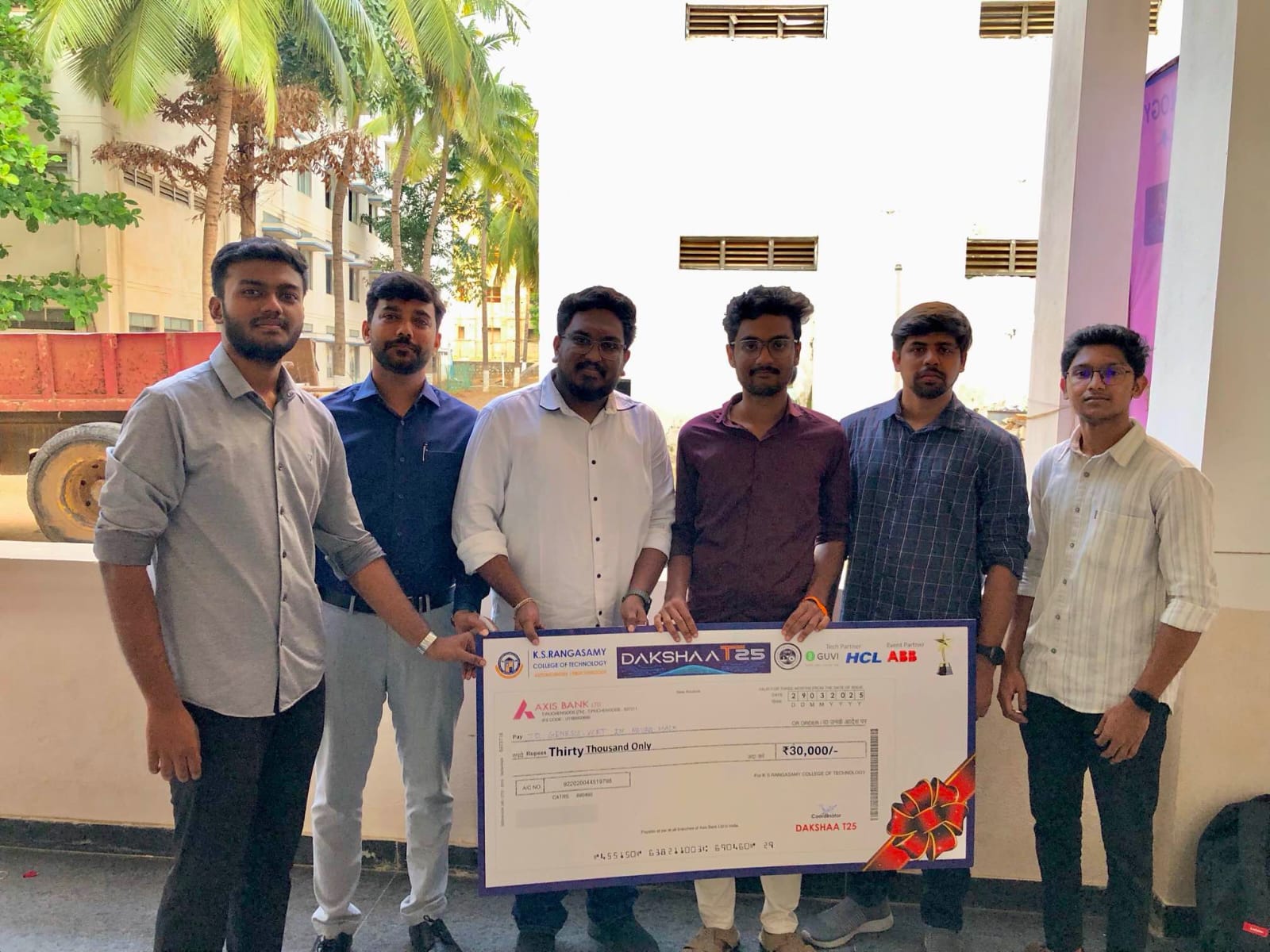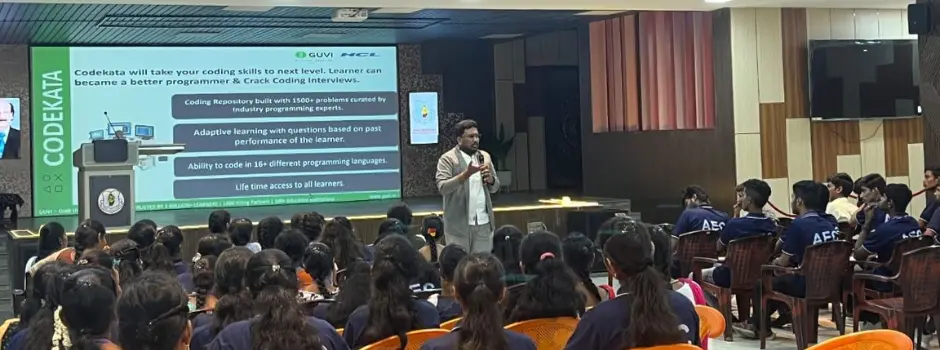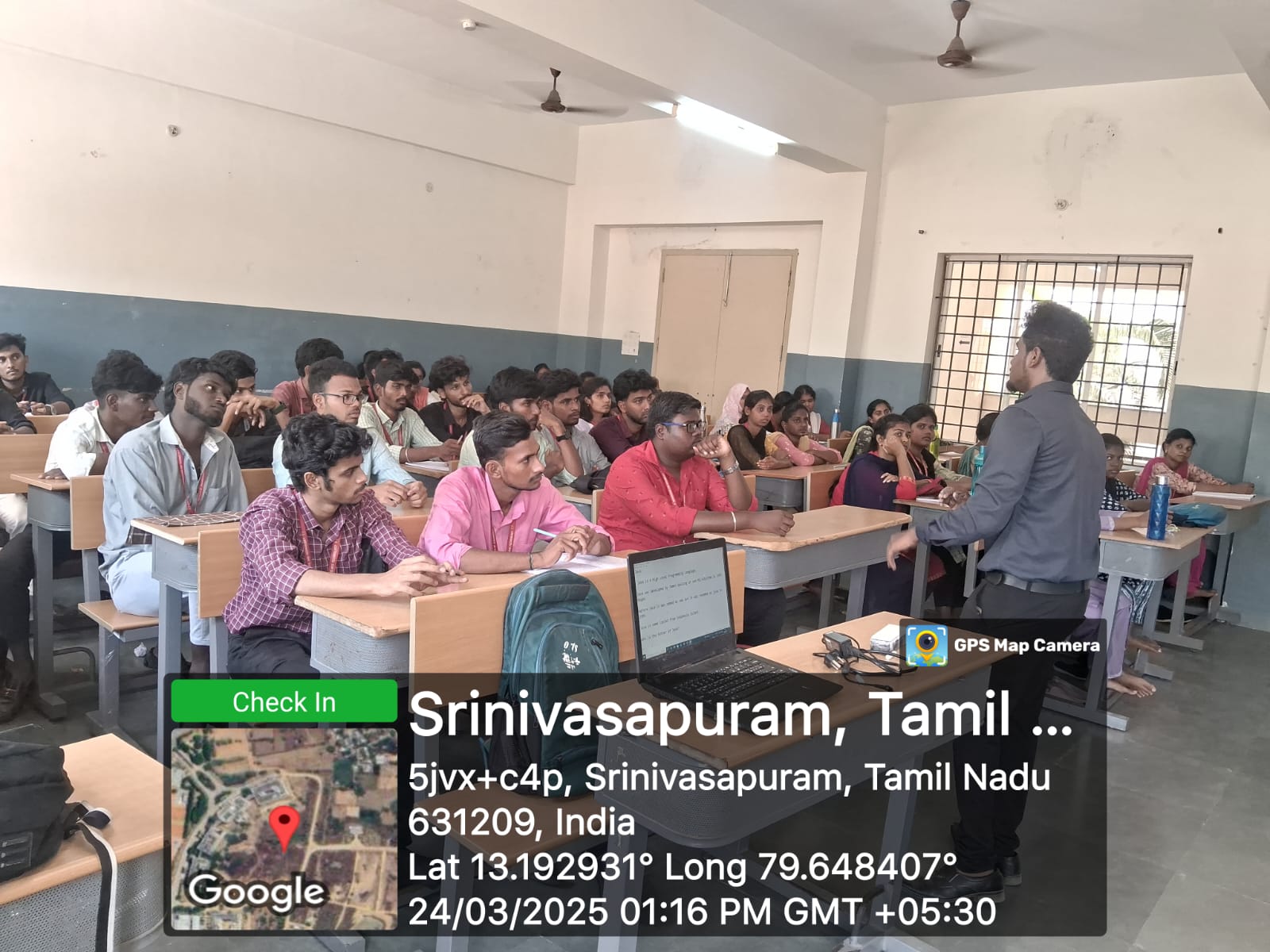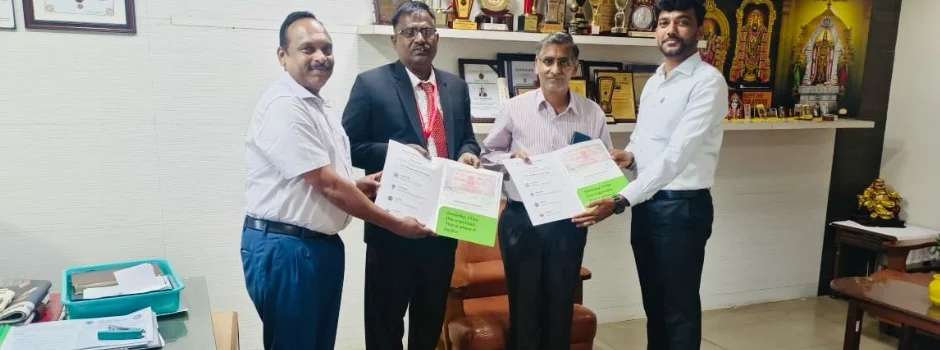
Empowering Future Engineers with HCL GUVI’s Virtual AutoCAD Session for Excel Engineering College
Oct 09, 2025 3 Min Read 2090 Views
(Last Updated)
In a world where engineering and design technologies are evolving at a rapid pace, classroom learning alone is no longer sufficient. Today’s engineering students need more than theory; they need hands-on exposure to industry-standard tools that prepare them for real-world challenges. Recognizing this crucial need, HCL GUVI, a leading EdTech platform, partnered with Excel Engineering College to deliver a power-packed virtual AutoCAD training session.
Held on April 23rd and 24th, 2025, the session wasn’t just another software demo; it was a transformative learning experience led by a seasoned CAD expert. In this blog, we take you behind the scenes of this impactful initiative that’s helping shape the engineers of tomorrow by merging academic learning with practical expertise.
Table of contents
- Bringing Industry into the Classroom
- What the Students Learned
- Impact of the Session
- Behind the Scenes: The C2C Team Who Made It Happen
- Wrapping Up
Bringing Industry into the Classroom
In today’s rapidly evolving technological landscape, the engineering world is constantly being reshaped by innovations in design tools and automation. AutoCAD, a flagship software in the CAD (Computer-Aided Design) space, remains a cornerstone for engineers across various disciplines, including mechanical, civil, electrical, and architectural. From drafting mechanical components to laying out floor plans and simulating industrial processes, the relevance of AutoCAD in real-world engineering applications is undeniable.
However, while AutoCAD is widely recognized in the industry, its practical application is often underexplored in academic environments. Many students graduate with only theoretical exposure, which can create a gap between what they learn and what companies expect from job-ready professionals.
Recognizing this skill divide, HCL GUVI stepped in with a solution, a highly interactive, hands-on virtual training session specifically tailored for the students of Excel Engineering College. This session was meticulously designed not only to introduce the software but also to simulate real-world usage, making students feel as though they were working in a design studio rather than a classroom.
At the heart of the program was Mr. Vaiaravelan, an industry veteran with over 12 years of experience in mechanical design engineering. Having worked with both Indian and international clients, his portfolio spans product development, industrial prototyping, automotive component design, and plant layout drafting. His approach is rooted in practical knowledge, industry trends, and project-based learning.
During the session, Mr. Vaiaravelan didn’t merely teach software commands. He explained the ‘why’ behind every tool, linking features to real-world applications. He shared actual project case studies, demonstrating how AutoCAD is used in professional settings. He also highlighted the industry standards for drawing, dimensioning, and scaling. He offered career insights on how mastering AutoCAD can open doors to roles in design, R&D, and manufacturing. He encouraged students to think like problem solvers and innovators, not just software users.
The goal was to make students industry-ready, giving them both the confidence and competence to step into internships, final-year projects, or even freelance design work with a strong foundation.
This immersive experience is what sets HCL GUVI’s programs apart. It transforms passive learners into active creators, capable of turning engineering concepts into functional, visually accurate designs, just like professionals in leading engineering firms today.
What the Students Learned
Over two insightful days, students of Excel Engineering College embarked on a comprehensive journey into the world of AutoCAD. The first day focused on building a strong foundation. Students were introduced to the AutoCAD interface, where they familiarized themselves with essential drawing tools and basic commands. Through structured guidance, they learned how to create 2D sketches, modify geometries, and apply those skills to draft simple mechanical components during a live demonstration.
The second day delved into more advanced and practical aspects of the software. Students explored the use of layers, blocks, and templates, key components for managing complex drawings. They were taught professional techniques for dimensioning and annotation, ensuring that their designs could effectively communicate intent and scale.
A significant highlight was the session on isometric drawing, which helped students visualize their designs in 3D, bridging the gap between technical sketches and real-world applications. The day concluded with a real-time walkthrough of engineering blueprints, followed by an interactive Q&A where students posed their drafting challenges and received expert guidance.
What truly made this session stand out was its hands-on, application-oriented approach. Rather than passively consuming content, students actively participated by drawing, experimenting, asking questions, and iterating on their work. This immersive experience not only enhanced their technical proficiency but also nurtured problem-solving skills and design thinking, crucial competencies for modern engineers.
By participating in this focused AutoCAD training session, the students of Excel Engineering College gained more than just software familiarity; they developed a critical advantage. With this early exposure, they are now better equipped to tackle academic design projects with clarity and precision. Moreover, their practical knowledge sets them apart during internship applications and job interviews, where hands-on experience often makes all the difference.
Impact of the Session
The feedback from participants was overwhelmingly positive, with many students praising the clarity of instruction, the well-structured pace, and the strong alignment with real-world engineering applications. The session didn’t just enhance their technical know-how; it also boosted their confidence to apply AutoCAD skills in both academic projects and future professional settings.
This initiative by HCL GUVI exemplifies its commitment to bridging the academia-industry gap by equipping students with practical, job-ready skills. The success of the AutoCAD training session at Excel Engineering College stands as a powerful testament to the effectiveness of industry-integrated learning experiences in shaping the engineers of tomorrow.
Behind the Scenes: The C2C Team Who Made It Happen
This Session’s success resulted from the dedicated coordination by HCL GUVI’s College to Corporate (C2C) team. Led by Banuprakash M, with Anandan Rajamanickam & Lakshamana Narayan assisting in organizing, the team worked tirelessly to ensure all deliverables were met smoothly. The team, including Vinoth, Swathy Suriyababu, Arun Shukla, Rajib Kumar Lakra, and Athulya Pradeep, coordinated from behind the scenes, ensuring seamless event execution. This dedicated team effort, from logistics to real-time support, helped create a meaningful and impactful student experience.
Special thanks go to HCL GUVI’s management team for their invaluable support. Arun Prakash, CEO of HCL GUVI, and S.P. Balamurugan, HCL GUVI’s co-founder, provided strategic oversight that ensured the initiative aligned with HCL GUVI’s mission of empowering students with real-world AI skills. Anitha Sathish, COO at HCL GUVI, brought her vision for learner-centric excellence to the forefront, ensuring the initiative was designed to meet the highest standards of quality and impact.
Their dedication to building a transformative learning environment was instrumental in shaping the success of this program. The support of leaders like Muruganandam P and Vasanth Vijayabaskar further ensured that the program had the resources and guidance needed for impactful execution.
Read More: HCL GUVI’s “How to Crack” Series Prepares SNU Students for Careers at Seagate and GoDaddy…
Wrapping Up
As technology continues to reshape the engineering landscape, initiatives like HCL GUVI’s virtual AutoCAD session are crucial in preparing students to meet industry demands with confidence and competence. By blending academic learning with practical exposure, this training empowered students of Excel Engineering College to take a significant step forward in their professional journey.
From mastering foundational tools to understanding real-world applications, the session delivered far more than just technical training, it instilled a mindset of innovation, precision, and continuous learning. With such impactful collaborations, HCL GUVI reaffirms its role as a pioneer in tech education, shaping the future of engineering talent.




































Did you enjoy this article?